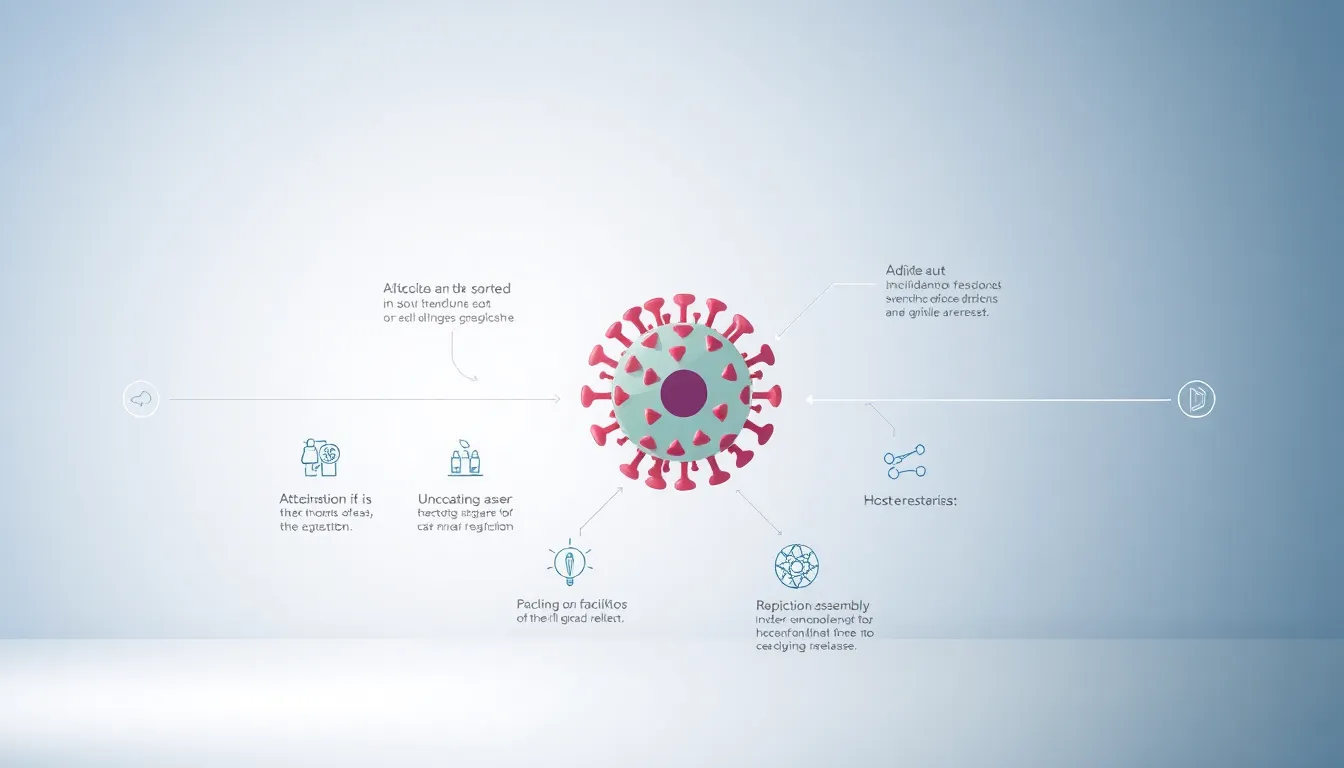Table of Contents
ToggleHave you ever wondered how a virus can go from a simple microscopic entity to a global pandemic? Viral replication is the answer to this mystery, and it’s more fascinating than any horror movie plot. Think of viruses as the ultimate opportunists, sneaking into your cells and multiplying faster than a teenager’s social media posts. In this deep dive, we’ll unravel the science behind viral replication, explore its implications, and maybe even throw in a few chuckles along the way. Buckle up.
What Is Viral Replication?

Viral replication refers to the process through which viruses reproduce within a host cell. Unlike living organisms, viruses cannot replicate independently. Instead, they hijack the machinery of a host cell to make copies of themselves.
Once inside the host, viruses can start to flood the system, spreading the infection. This replication process is typically divided into several critical stages that include attachment, entry, uncoating, replication, assembly, and release. Each stage is meticulously orchestrated, playing a vital role in the virus’s life cycle. Imagine a house guest who just can’t follow house rules – they take over everything.
During this process, the virus effectively transforms the host’s cellular functions to prioritize its own needs. That’s right: your cells become unwitting accomplices in a mini crime spree, all to help viruses multiply.
The Viruses Involved in Replication
Several types of viruses use replication, but they fall mainly into two classes: RNA viruses and DNA viruses. RNA viruses, such as influenza and HIV, are notorious for their rapid mutation rates. This makes them a significant challenge for medical research and treatment.
On the other hand, DNA viruses, including herpes and smallpox, exhibit more stable genomes, making their replication a slightly different beast. Each type has developed unique strategies for evading the host’s immune response, allowing them to thrive.
For instance, bacteriophages, viruses that infect bacteria, use a remarkable process known as the lytic cycle, where they directly lyse the bacterial cell to release their progeny. It’s like a sci-fi movie where a small creature takes over a massive spaceship.
Stages of Viral Replication
Viral replication generally unfolds in several stages:
- Attachment: The virus binds to specific receptor sites on the host cell surface. Think of it as a lock-and-key mechanism.
- Entry: After attachment, the virus enters the cell. This might happen through direct fusion or endocytosis, where the cell engulfs the virus as if it were a tasty morsel.
- Uncoating: Once inside, the viral capsid is dismantled, releasing its genetic material into the host’s cytoplasm.
- Replication: The viral genetic material commandeers the cell’s machinery to produce viral components. Individual proteins and new viral genomes are synthesized, this is where the magic happens.
- Assembly: Newly formed viral particles are assembled from the replicated components.
- Release: Finally, these new viral particles exit the host cell, often killing it in the process, and go on to infect other cells. Think of it as a contagious birthday party that keeps growing.
Factors Affecting Viral Replication
Several key factors significantly impact viral replication. First, the host cell’s health plays a crucial role: a compromised immune system may help easier replication for the virus. Second, viral load, or the amount of virus present at the onset of infection, can affect how quickly and extensively a virus replicates.
Environmental conditions, such as temperature and pH level, also influence replication efficiency. For instance, some viruses may replicate more effectively at specific temperatures. Understanding these factors is vital for developing antiviral strategies, akin to choosing the right conditions for plant growth to yield a bountiful harvest.
Consequences of Viral Replication
Viral replication can have various consequences for both the host and the virus itself. At a basic level, successful replication allows viruses to spread through populations, leading to outbreaks and epidemics. For the host, viral replication can lead to cell death, which often showcases noticeable symptoms such as fever and fatigue.
In chronic infections, like those caused by hepatitis B and HIV, persistent replication may lead to long-term health complications, encouraging extensive ongoing research. Interestingly, some viruses may even interact with the host’s immune system, leading to the development of autoimmune responses, a grim twist to our narratives of replication.
Overall, while viral replication helps the virus flourish, it often comes with severe repercussions for the infected organism. It’s a classic case of “you win some, you lose some.”
Research and Implications for Medicine
Research into viral replication plays a crucial role in modern medicine. Understanding the intricacies of viral life cycles can lead to the development of antiviral medications that target specific stages of replication. For instance, medications for HIV aim to interrupt the replication process by inhibiting protease or reverse transcriptase enzymes. These targeted approaches can significantly reduce viral loads and improve patient outcomes.
Also, insights from viral replication studies can contribute to vaccine development, allowing scientists to create effective immunizations that prevent infection in the first place. For example, mRNA vaccines, like those for COVID-19, use knowledge of viral replication to initiate an immune response without exposing the individual to the virus itself.
In a fast-paced world, this kind of research is vital to combat emerging viral threats and ensure public health safety, like keeping an umbrella handy in unpredictable weather.










